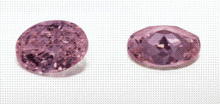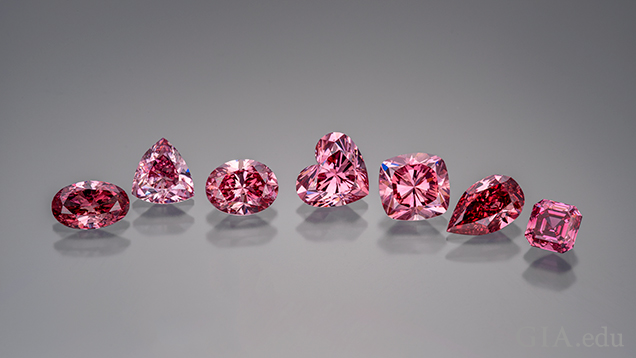Pink diamonds, among the rarest and most coveted gems in the world, owe their existence to geological processes that date back to the disintegration of ancient supercontinents. While diamonds in general symbolize luxury and eternal love, pink diamonds hold a unique place in the market, often fetching astronomical prices. But what makes these gems so special, and where can we expect to find more of them in the future?

Mysteries of Pink Diamonds
In groundbreaking research published in Nature Communications, scientists have shed light on the formation and discovery of pink diamonds, particularly those from the Argyle mine in Western Australia. This single mine has been the source of more than 90% of the world's pink diamonds, making it an unparalleled treasure trove.
How Do Pink Diamonds Form?
Diamonds are formed deep within the Earth under extreme pressure and temperature conditions. However, pink diamonds are unique because their color comes from structural distortions within the diamond crystal lattice caused by intense pressure. These distortions create imperfections that diffract light, giving pink diamonds their distinct hue.
The Role of Supercontinents in Diamond Formation
The story of pink diamonds is intricately linked to the tectonic movements of Earth's crust. The Argyle diamonds were brought to the surface due to the breakup of the ancient supercontinent Nuna. Approximately 1,800 million years ago, the continental plate beneath the Kimberley region collided with what is now Western Australia, forming Nuna. When Nuna began to break apart 500 million years later, the resultant geological activity created conditions favorable for the formation of diamond-rich magma.
Argyle: The Epicenter of Pink Diamond Production
The Argyle mine, located in the Kimberley region, stands out not just for the volume but also for the unique quality of its pink diamonds. The mine's geological history is a testament to the powerful forces that shaped it. The collision and subsequent breakup of Nuna stretched the Earth's crust, allowing volcanic pipes rich in diamonds to ascend to the surface.
The Decline and Legacy of Argyle
With the Argyle mine ceasing operations in 2020, the availability of pink diamonds has dwindled, causing their prices to soar. As the primary source of pink diamonds, Argyle's closure marks a significant shift in the market, prompting a global search for new sources.
Future Prospects: Where to Find More Pink Diamonds
The hunt for the next big pink diamond deposit hinges on understanding the geological conditions that favor their formation. Researchers suggest that the key ingredients include:
- Continental Breakup: Regions where ancient supercontinents have split apart.
- Edges of Ancient Continents: Zones of weakness and geological activity.
- Volcanic Pipes: Pathways through which diamond-rich magma can reach the surface.
Pink Diamonds as Time Capsules
Beyond their beauty, pink diamonds are ancient relics that offer insights into Earth's history. They contain carbon, some of which originates from ancient organic matter buried deep within the Earth. These gems are not only symbols of luxury but also scientific treasures that help us understand the Earth's geological past.
Conclusion
Pink diamonds, with their unique formation process and stunning appearance, remain some of the most sought-after gems in the world. As we delve deeper into their origins, we uncover the fascinating interplay between geological forces and the Earth's evolutionary history. With the closure of the Argyle mine, the search for new pink diamond sources continues, driven by both the allure of these precious stones and the scientific quest to uncover the secrets of our planet.
For more insights into the world of pink diamonds and their geological significance, stay tuned to Gem Anastation – your go-to source for all things related to the fascinating world of gemstones

